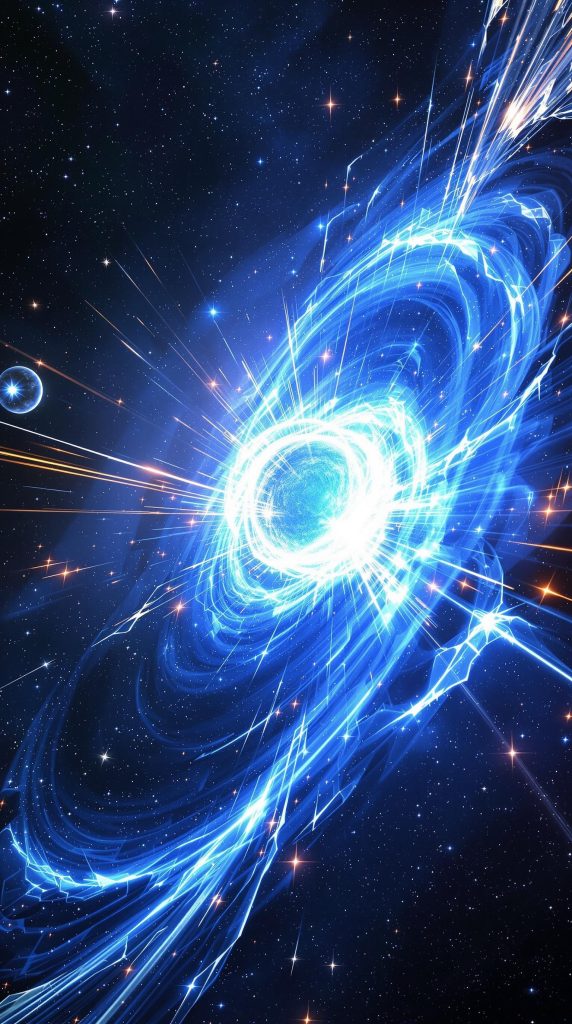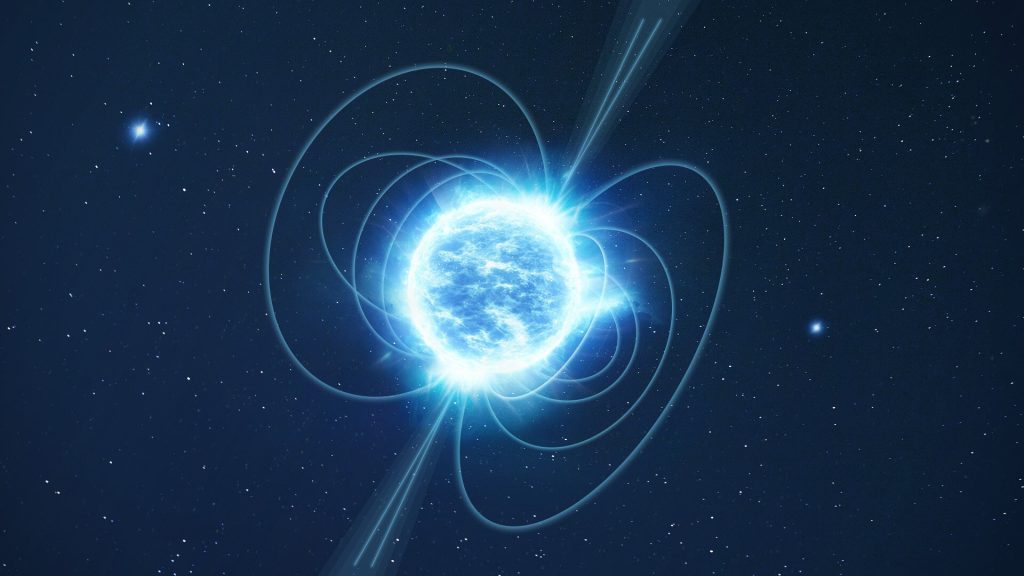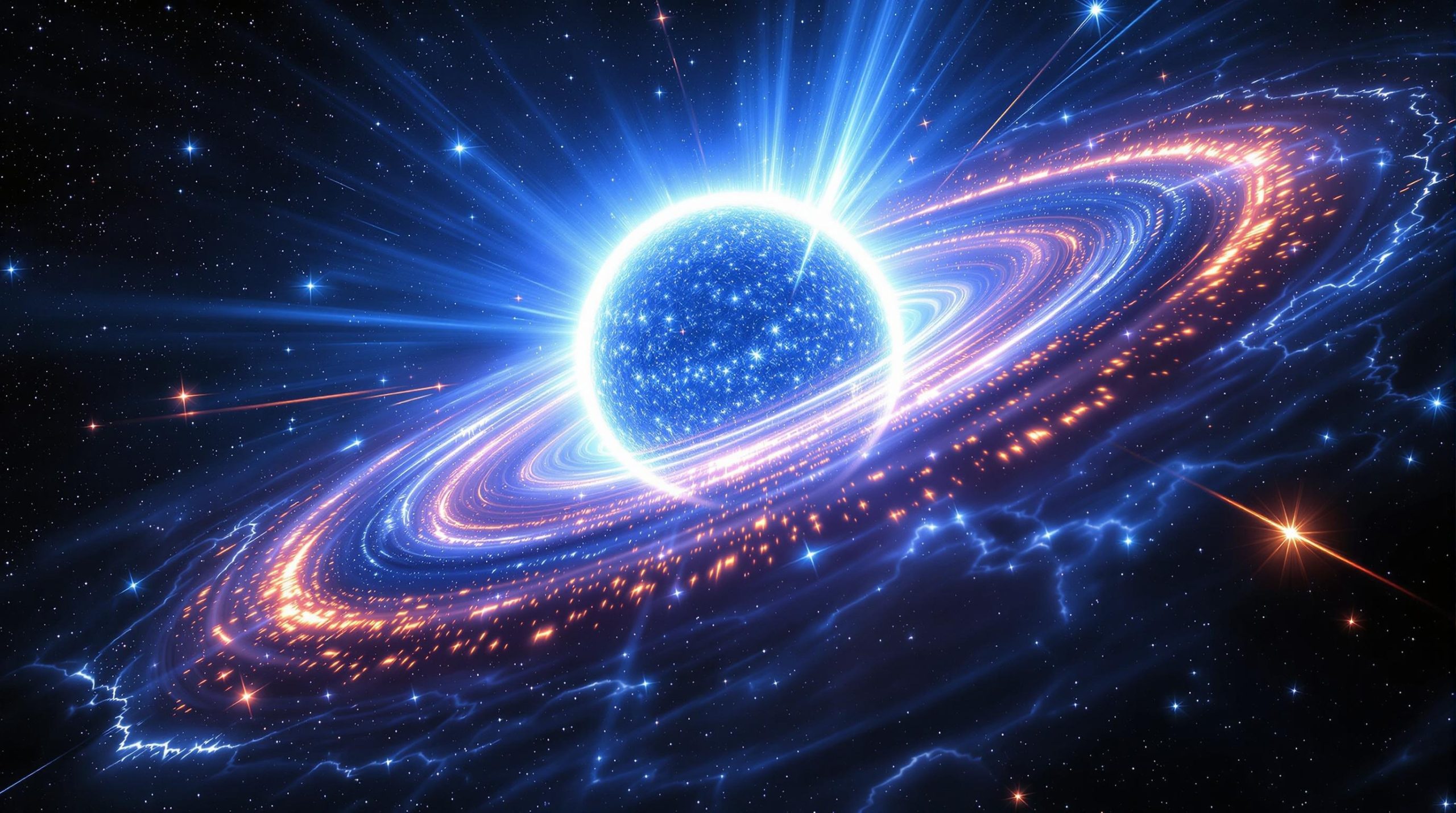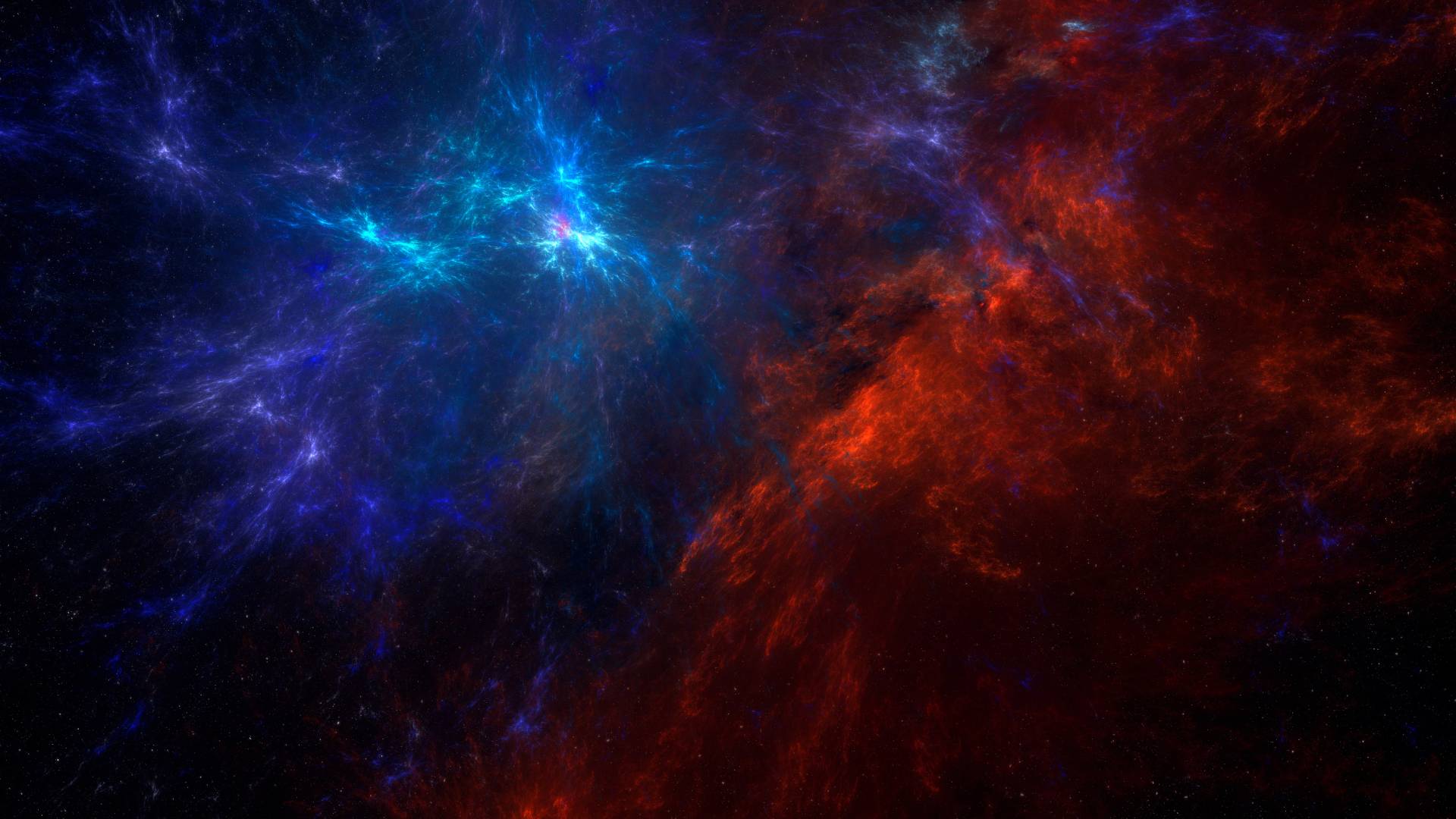Neutron stars are one of the most extreme and fascinating objects in the universe. They are the remnants of massive stars that have undergone supernova explosions, leaving behind incredibly dense cores composed almost entirely of neutrons. These cosmic entities are just a few kilometers in diameter but contain more mass than our Sun, making them among the densest known objects in existence. stay with Spaceyv
Formation of a Neutron Star
Neutron stars form during the explosive death of a massive star, a process known as a supernova. When a star with a mass between 8 to 25 times that of the Sun exhausts its nuclear fuel, it can no longer support itself against gravitational collapse. The outer layers are ejected into space, while the core collapses under immense gravitational pressure. This collapse forces protons and electrons to combine, forming neutrons and releasing vast amounts of energy in the form of neutrinos.
The result is a neutron star, a highly compact object with an average radius of about 10-15 kilometers but a mass typically 1.4 times that of the Sun. Despite their small size, neutron stars possess an incredibly strong gravitational field due to their extreme density.

Characteristics of a Neutron Star
- Extreme Density: A neutron star’s density is unimaginable—a sugar-cube-sized piece of neutron star material would weigh about a billion tons on Earth.
- Strong Magnetic Fields: Neutron stars have powerful magnetic fields, often billions of times stronger than Earth’s. This magnetic field plays a crucial role in the behavior of some neutron stars, including pulsars and magnetars.
- Rapid Rotation: Due to the conservation of angular momentum, neutron stars spin rapidly after formation. Some rotate hundreds of times per second, a phenomenon observed in pulsars.
- Intense Gravity: The surface gravity of a neutron star is about 2×10^11 times stronger than Earth’s gravity. This extreme gravity significantly warps space-time and affects surrounding matter.
Types of Neutron Stars
Neutron stars exhibit diverse properties based on their rotation, magnetic fields, and emission patterns. Some of the most well-known types include:
1. Pulsars
Pulsars are rapidly rotating neutron stars that emit beams of electromagnetic radiation from their magnetic poles. As they spin, these beams sweep across space like a lighthouse, creating periodic pulses detectable from Earth. The first pulsar was discovered in 1967 by Jocelyn Bell Burnell and Antony Hewish, revolutionizing our understanding of neutron stars.
2. Magnetars
Magnetars are neutron stars with extraordinarily strong magnetic fields, up to 1,000 times stronger than those of typical neutron stars. These extreme magnetic fields cause powerful X-ray and gamma-ray bursts, making magnetars some of the most energetic objects in the universe.
3. X-ray Binaries
Some neutron stars exist in binary systems, where they accrete matter from a companion star. As this material falls onto the neutron star, it heats up and emits X-rays, forming an X-ray binary system. These systems provide crucial insights into neutron star physics and general relativity.
Neutron Stars and General Relativity
Neutron stars are excellent laboratories for testing Einstein’s General Theory of Relativity. Their immense gravity bends light significantly, leading to gravitational lensing effects. Scientists study pulsars in binary systems to test gravitational waves and other relativistic effects, providing insights into the nature of space-time.

The Fate of a Neutron Star
Over time, neutron stars can undergo several possible evolutionary paths:
- Cooling and Fading: Over millions of years, neutron stars gradually cool and become less detectable, eventually fading into space as cold, inert objects.
- Merging into a Black Hole: In binary systems, two neutron stars can spiral toward each other and merge, forming either a more massive neutron star or a black hole. Such events, known as kilonovae, are responsible for producing heavy elements like gold and platinum.
- Accretion and Collapse: If a neutron star in a binary system gains enough mass from its companion, it may collapse into a black hole.
Neutron Stars and Multi-Messenger Astronomy
The detection of gravitational waves from neutron star mergers by observatories like LIGO and Virgo has ushered in a new era of multi-messenger astronomy. These events not only produce gravitational waves but also emit electromagnetic radiation, allowing scientists to study them in multiple wavelengths simultaneously. The famous GW170817 event, observed in 2017, provided groundbreaking evidence for neutron star mergers producing heavy elements and gravitational waves.
FAQ About Neutron Stars
1. How big is a neutron star?
A neutron star is typically about 10-15 kilometers in diameter, roughly the size of a city.
2. How much does a neutron star weigh?
Despite their small size, neutron stars typically have 1.4 times the mass of the Sun.
3. What happens if you fell onto a neutron star?
The intense gravity would spaghettify any object long before reaching the surface, and the extreme radiation would likely destroy it instantly.
4. Can a neutron star turn into a black hole?
Yes, if a neutron star accumulates enough mass (exceeding about 2-3 solar masses), it can collapse into a black hole.
5. How do scientists detect neutron stars?
Neutron stars are detected mainly through their radio, X-ray, and gamma-ray emissions, especially from pulsars and magnetars.
6. What is the difference between a pulsar and a magnetar?
Pulsars are rapidly rotating neutron stars that emit periodic radio signals, while magnetars have incredibly strong magnetic fields that cause extreme X-ray and gamma-ray bursts.
7. Do neutron stars last forever?
No, over millions to billions of years, they cool down and fade into darkness, becoming undetectable.
Conclusion
Neutron stars are among the most extreme objects in the universe, offering a wealth of scientific insights into physics, general relativity, and the fundamental nature of matter. Their immense density, strong magnetic fields, and rapid rotation make them crucial targets for astrophysical research. As technology advances, future observations and discoveries will further unravel the mysteries of these cosmic powerhouses, deepening our understanding of the universe.
From pulsars to magnetars and neutron star mergers, these stellar remnants continue to shape our comprehension of high-energy astrophysics and cosmic evolution.



